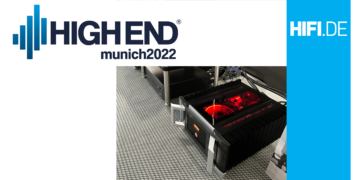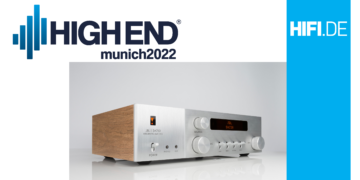| HIFI-FORUM » PC, Netzwerk & Multimedia » PC & Hifi » Der DRC-Thread | |
|
|
||||
Der DRC-Thread+A -A |
||||
| Autor |
| |||
|
fujak
Inventar |
#101
erstellt: 20. Okt 2010, 05:19

|
|||
|
Hallo rpnfan, wie im Erföffnungsposting dieses Threads bereits dargestellt geht es in diesem Thread tatsächlich rein um die DRC-Opensource Software DRC von Denis Sbragion, die nicht einfach nur ein EQ ist, sondern Phase und Gruppenlaufzeiten korrigiert. Insofern wäre Dein Beitrag eher in einem anderen / eigenen Thread aufgehoben. Danke und Grüße Fujak |
||||
|
kaber
Stammgast |
#102
erstellt: 31. Okt 2010, 15:49

|
|||
|
Hallo, das Skript enthält einen Fehler. Beim Aufruf von glsweep fehlt der Parameter zur Angaber der silence. Das ist der nach der Länjge des Sweeps (60). Dann wird sweep.pcm und inverse.pcm erstellt und das Ganze läuft korrekt. Gruß |
||||
|
|
||||
|
Paffkatze
Stammgast |
#103
erstellt: 31. Okt 2010, 16:30

|
|||
|
Wenn das tatsächlich der Grund ist bin ich dir zu großem Dank verpflichtet. Kannst du mir als Laien evtl. noch kurz erklären, was genau ich wo einfügen muss? Vielen Dank!  |
||||
|
kaber
Stammgast |
#104
erstellt: 31. Okt 2010, 17:07

|
|||
|
Hallo, fujak schreibt in seinem script: glsweep.exe 44100 1.0 10 21000 60 0.05 0.005 sweep.pcm inverse.pcm Das sind 9 Parameter. Die fehlermeldung von glsweep sagt This program may be freely redistributed under the terms of the GNU GPL and is provided to you as is, without any warranty of any kind. Please read the file "COPYING" for details. Usage: glsweep rate amplitude hzstart hzend duration silence leadin leadout sweepfile inversefile Parameters: rate: reference sample rate amplitude: sweep amplitude hzstart: sweep start frequency hzend: sweep end frequency duration: sweep duration in seconds silence: leading and trailing silence duration in seconds leadin: leading window length as a fraction of duration leadout: trailing window length as a fraction of duration sweepfile: sweep file name inversefile: inverse sweep file name Example: glsweep 44100 0.5 10 21000 45 2 0.05 0.005 sweep.pcm inverse.pcm Wenn du nachzählst sind das 10 Parameter für glsweep Zwischen der "60" (duration) bei fujak bzw und "0.05" (leadin) fehlt die "2" (silence) wie beim Example. Dadurch werden sweep.pcm und inverse.pcm nicht erzeugt und es fehlt schlicht was für den weiteren Ablauf. Wünsche dir, dass es das war. Gruß |
||||
|
Paffkatze
Stammgast |
#105
erstellt: 31. Okt 2010, 17:53

|
|||
|
SUUUPER!!!! Ich komm nun schon viel weiter. (habe die 2 aus dem Beispiel verwendet, gibts da ne bessere Zahl?) Recordedsweep_l.pcm (sowie das rechte Pendant) und auch das entsprechende wav-file werden erstellt. Aber es folgt das nächste Problem. Es fehlen nun die Conf_normal-44.1_L.drc sowie Conf_normal-44.1_R.drc. Hier mal die gesamte Log:
Das Problem sollte ich aber selbst schnell behoben haben, nach einem Blick in die Anleitung weis ich wohl schon, was ich vergessen habe  Vielen vielen Dank schonmal, ich hatte schon aufgegeben  [Beitrag von Paffkatze am 31. Okt 2010, 17:59 bearbeitet] |
||||
|
Paffkatze
Stammgast |
#106
erstellt: 31. Okt 2010, 18:15

|
|||
|
So, nun läufts durch  Bis zu dem Punkt, wo DRC die Zielkurve laden möchte und das nicht kann, weil ich noch keine erstellt habe. Da muss ich mich erstmal mit beschäftigen Bis zu dem Punkt, wo DRC die Zielkurve laden möchte und das nicht kann, weil ich noch keine erstellt habe. Da muss ich mich erstmal mit beschäftigen  Aber wie es scheint, funzt nun alles. Vielen Dank nochmal, das hat echt den Knoten gelöst  EDIT: Hm, irgendwie mags mich nicht  Habe in die Zielkurvendateien erstmal das eingetragen, was in Fujaks Anleitung für den Anfang empfohlen wird, also: Habe in die Zielkurvendateien erstmal das eingetragen, was in Fujaks Anleitung für den Anfang empfohlen wird, also:0 -30.0 10 -10.0 20 0.00 20000 0.00 21000 -3.00 22050 -30.0 Nun Spuckt mir DRC folgende Fehler aus:
Was fehlt denn in Zeile 6? Steht doch alles drin?  [Beitrag von Paffkatze am 31. Okt 2010, 19:19 bearbeitet] |
||||
|
kaber
Stammgast |
#107
erstellt: 31. Okt 2010, 19:48

|
|||
|
Hi, das erste was mir auffällt: Warning: Microphone input levels are quite low. Increase the preamp gain, or in crease the playback levels Du bist zu leise unterwegs. fujak schreibt, dass der Wert ca. 0,95 sein sollte. Über die Zielkurve muss ich noch grübeln. Gruß |
||||
|
Paffkatze
Stammgast |
#108
erstellt: 31. Okt 2010, 19:49

|
|||
|
Das ist auch nur nen Testlauf, da ist weder nen Mic angeschlossen, noch wird irgendwas über die Lautsprecher ausgegeben. Ich teste nur erstmal, ob das Skript durchläuft  Ich habs auch mal mit anderen Zielkurven probiert (die lange aus Fujaks PDF). Nun steht das in Zeile 13 was fehlt, also immer in der letzten Befehlszeile. [Beitrag von Paffkatze am 31. Okt 2010, 19:50 bearbeitet] |
||||
|
Sathim
Inventar |
#109
erstellt: 31. Okt 2010, 19:59

|
|||
|
Na das klingt ja prima ! Hatte und habe auch aktuell nicht genug Zeit um selber nochmal aktiv zu werden, aber schön dass es jetzt doch klappt. Zunächst mal geht mein Mikro zur Kalibrierung. |
||||
|
kaber
Stammgast |
#110
erstellt: 31. Okt 2010, 20:10

|
|||
|
Hi, komisch ist, dass drc bei 6 Zeilen was von 7 Punkten erzählt. Hast du am Ende irgendwelche Blanks drin ? Ich habe bei mir mal Blanks eingetragen und dann deinen Fehler gekriegt. Gruß |
||||
|
skinner@vrisom
Hat sich gelöscht |
#111
erstellt: 31. Okt 2010, 20:16

|
|||
|
Du hast bestimmt am Ende eine Leerzeile gelassen, mit der DRC nichts anfangen kann. Ich bin mir nicht mehr sicher, ob jetzt eine Leerzeile hin muss oder nicht. Auf jeden Fall ist DRC in dem Bereich empfindlich. |
||||
|
Paffkatze
Stammgast |
#112
erstellt: 31. Okt 2010, 20:57

|
|||
|
Ich habe eine Leerzeile eingefügt, weil es in Fujaks Anleitung so steht. EDIT: Hab alle Leerzeilen entfernt, nun läuft alles einwandfrei und die Convolver-Files werden erstellt  Was lange währt wird endlich gut  [Beitrag von Paffkatze am 31. Okt 2010, 21:27 bearbeitet] |
||||
|
Paffkatze
Stammgast |
#113
erstellt: 01. Nov 2010, 12:16

|
|||
|
So, nun habe ich meine ersten Ergebnisse, nachdem ich über eine Stunde eingepegelt habe... Entweder bin ich bei Micpeak bei 0,70 oder gar 0,40 rumgedümpelt oder gleich 0.97 und die Messung wurde abgebrochen. Habe ich die Micverstärkung auch nur etwas reduziert war ich wieder bei 0.70 *grrr* Schlussendlich hat sich rausgestellt, dass es beim Mic-Eingang der Soundkarte schlicht nicht möglich ist 0,95 zu erreichen (und ich habe wirklich nahezu alle erdenkbaren Kombinationen von Micpreampverstärkung und Micin-Lautstärke der Soundkarte durchprobiert). Mit Line-In war es mir schließlich möglich. Der MicPreamp verstärkt dabei maximal mit 70 (Monacor) wobei die rote Peakleuchte dauerhauft leuchtet, mittlerweile egal ob das Mic überhaupt angestöpselt ist... Den Line-In Eingang der Soundkarte habe ich auf 25 gestellt. Damit kommen diese Ergebnisse: für Links 0,95517 bzw. 0,94986 (schankt) und für Rechts wurde es dann kritisch: 0,967834. Hier bricht DRC auch manchmal ab, ist Glückssache ob es durchläuft oder nicht (jedes zweite Mal ca.) SOX bringt mir ne Warnung beim Durchlauf (leider kann ich das nicht rauskopieren weils so schnell weitergeht xD), irgendwas mit Clipping Warnung usw. Allerdings geht alles ganz normal weiter. Problem? Hier der Rest, den ich rauskopieren kann, das vorherige verschwindet ja leider:
In Audacity sieht das Ganze dann so aus:  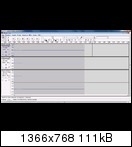 Ist das gut so? Beim Abspielen kommt am Anfang nur ein kurzer Knack. Lg Paul [Beitrag von Paffkatze am 01. Nov 2010, 12:24 bearbeitet] |
||||
|
Paffkatze
Stammgast |
#114
erstellt: 01. Nov 2010, 12:50

|
|||
|
So, das Stereowavfile habe ich nun per Convolver in Foobar eingebunden (einen der auf der Foobarpage angeboten wird, SIR habe ich irgendwie nicht einbebunden bekommen, wie habt ihr denn das gemacht?) und mal eine Messung mit Carma gemacht. Ich habe vor DRC eine Messung gemacht, absolut nichts verstellt und nach der Convolvereinbindung nocheinmal. Ich kann gar nicht glauben was meine Äuglein da erblickten:  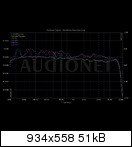 Ist das eine Linie oder ist das keine Linie?  Ich muss mich nur noch entscheiden, ob mir das klanglich gefällt xD [Beitrag von Paffkatze am 01. Nov 2010, 12:51 bearbeitet] |
||||
|
skinner@vrisom
Hat sich gelöscht |
#115
erstellt: 01. Nov 2010, 12:57

|
|||
|
Hattest du ein kalibriertes Mikro?  |
||||
|
Paffkatze
Stammgast |
#116
erstellt: 01. Nov 2010, 13:06

|
|||
|
nein, wieso? Meine Messungen sind, egal an welchen Tagen, immer übereinstimmend, von daher habe ich doch nun eine Vorstellung inwieweit da was verändert wird. Ich wollte es erstmal so probieren und wenns klappt denke ich übers Kalibrieren nach. Jetzt wo alles läuft ist es ja ein Kinderspiel das Ganze nochmal mit kalibriertem Mic durchzuführen. Ich hätte mich aber geärgert, wenn ich das Geld dafür ausgegeben hätte und dann DRC nicht zum Laufen bekommen hätte (so wie es ja auch erst aussah). Nun schau ich mal wie mir das zusagt und dann bin ich zuversichtlich, dass die Kalibrierung auch näher rückt  Aber erst stehen einige Tage einhören und ab und an Umschalten an. Weitere Probleme sind die Einbindung in XBMC, da habe ich noch keine Lösung und die Einbindung in die Mehrkanalwiedergabe (Ich habe einige Mehrkanalaufnahmen und da möchte ich das natürlich auch gerne nutzen.) [Beitrag von Paffkatze am 01. Nov 2010, 13:06 bearbeitet] |
||||
|
kaber
Stammgast |
#117
erstellt: 01. Nov 2010, 15:41

|
|||
|
Hallo Paffkatze,
Ich nutze den SIR über einen VST-Host (console). Damit kann man beliebige VST-Plugins relativ einfach hintereinander hängen. Ein weiterer Vorteil: Man ist nicht auf foobar begrenzt und kann jeden Sound (Line-In, Filme, ...) der am Rechner entsteht abspielen. Das mit dem kalibrierten Mikro kann ich nur unterstützen. Du musst ja immer bedenken, dass die Fehler des Mikros in den Filter reingerechnet werden. Und über 10Khz mach kaum ein Mikro alles richtig. Auch im Tiefbass nicht. Insofern könnte es sein, dass dir Optimierung durch DRC aus schon diesem Grund nicht zusagt. Gruß |
||||
|
skinner@vrisom
Hat sich gelöscht |
#118
erstellt: 01. Nov 2010, 16:12

|
|||
So wie bei mir. Obwohl es mit der Kalibrierung nicht getan ist. Ich habe meine kalibrierte Datei nicht eingebunden bekommen in den Ablauf von DRC. |
||||
|
Sathim
Inventar |
#119
erstellt: 01. Nov 2010, 16:17

|
|||
|
Könnte man die Mic-Kalibrierung nicht einfach als Zielkurve definieren? Dann müsste sich die Abweichung doch rausnullen oder? (Oder hab ich nen Denkfehler?) |
||||
|
Paffkatze
Stammgast |
#120
erstellt: 01. Nov 2010, 16:22

|
|||
|
Also vielleicht ist das falsch rübergekommen, aber ich habe keinen negativen ersten Eindruck von der Signalveränderung. Ich bin mir da noch ziemlich unschlüssig. Ich werde mir denke ich mal ein Schallpegelmessgerät zulegen (könnt ihr ein günstiges empfehlen?) müssen, damit ich bei Hörvergleichen genau einpegeln kann, denn das veränderte Signal ist ja deutlich leiser und demzufolge fallen Vergleiche schwer. Ich habe schon nach Gehör eingepegelt aber Unterschiede lassen sich dennoch nicht vermeiden. (Ich habe zum Vergleich einmal Foobar mit Convolver und einmal den WMP ohne Veränderung gestartet und das gleiche Lied abgespielt. Also während des Liedes immer wieder auf den anderen Player gewechselt) Um das möglichst akkurat zu machen und psychologische Fehlschlüsse auszuschließen, werde ich wohl so ein Messgerät noch brauchen um dann anschließend einen Blindtest zu absolvieren (ich hoffe meine Freundin spielt da mit  ) )Aufgefallen ist mir auf jeden Fall schon, dass ich deutlich weniger Dröhnprobleme habe und Bässe zurückhaltender sind bzw. tonal anders klingen. Ich kann dadurch auch höhere Lautstärken fahren ohne das es nervig wird. Allerdings wünscht man sich auch grad bei manchen Titeln den etwas raumbedingten überbetonten Bass xD Prinzipiell bin ich also bisher schon recht zufrieden. Die Feinheiten müssen halt geregelt werden und sind denke ich auch sehr zeitaufwendig. Allein schon bis zu welchem Anteil das geglättete Signal zum Originalsignal gemischt werden soll... Sehr wichtig währe mir noch die Integration in die 5.0 Umgebung, klasse wäre es auch also die Rears und den Center entsprechend bearbeiten zu können. Aber das geht nicht mit DRC, oder? LG Paul [Beitrag von Paffkatze am 01. Nov 2010, 16:23 bearbeitet] |
||||
|
Paffkatze
Stammgast |
#121
erstellt: 01. Nov 2010, 16:54

|
|||
Kannst du mir vielleicht kurz erklären wie du das gemacht hast, oder einen Link wo das beschrieben ist? Ich habe das Programm vor mir, SIR geladen aber nun weis ich nicht weiter *g* So siehts bei mir aus:  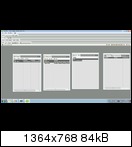 Die Lösung hier scheint auch gut zu sein:  http://convolver.sourceforge.net/ http://convolver.sourceforge.net/ [Beitrag von Paffkatze am 01. Nov 2010, 16:58 bearbeitet] |
||||
|
skinner@vrisom
Hat sich gelöscht |
#122
erstellt: 01. Nov 2010, 16:54

|
|||
Dachte ich auch, brachte aber nicht die gewünschte Veränderung. Im Gegenteil, es brachte einfach gar nichts. Ich setze mich damit nicht weiter auseinander. Ich habe einen DSP mit 16 Filtern pro Seite, das ist praktisch und klanglich Spitze. Ich wünsche Paffkatze viel Erfolg mit DRC. |
||||
|
kaber
Stammgast |
#123
erstellt: 01. Nov 2010, 17:53

|
|||
|
Uff ... Also du hast bei der Console Plugins. Die musst du bekannt machen. das ist dir anscheinend schon mal geglückt, sonstkönnte man den SIR ja nicht sehen. Es läuft so, dass du bei den INTERNL waveIn und wavaOut jeweils anklickst und dann in dein Panel (also da wo du grade die Listen plaziert hast) reinziehst. Das gleiche machst du mit SIR. Dann verbindest du einfach mit gedrückter linker Maustaste WaveIn mit SIR (links) und SIR (rechts) mit WaveOut. Dann machst du einen Doppelklick auf das SIR-Icon und das GUI von SIR geht auf. Jetzt hängst nur noch von der Konfiguration ab (setup/audio). DAnn must du noch einschalten (console panel: Play) und dann sollte das gehen. Steht allerdinsg auch in der Bedieungsanleitung ... Gruß |
||||
|
Paffkatze
Stammgast |
#124
erstellt: 01. Nov 2010, 18:19

|
|||
|
Dankeschön  Ich hab zwar im Manual nachgeschaut aber nichts passendes gefunden. Auf das Rausziehen bin ich durch Zufall dann drauf gestoßen. Nun siehts so aus:  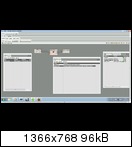 Allerdings ist mir WaveIn noch unklar. Ich kann da ja lediglich die Soundkarteneingänge auswählen, aber da speise ich doch kein Signal ein. Wie kann ich das denn einstellen, dass der als In-Signal das hernimmt, was eigentlich ausgegeben wird? Denn so passiert nun noch nichts. Andere Frage: So wie ich das in den Konfigeinstellungen gesehen habe, funktioniert dieses Programm nur mit maximal 2.0? Also kann ich die Verwendung mit Mehrkanal (wenn es denn mit DRC überhaupt geht) damit vergessen? [Beitrag von Paffkatze am 01. Nov 2010, 18:28 bearbeitet] |
||||
|
kaber
Stammgast |
#125
erstellt: 01. Nov 2010, 18:37

|
|||
|
Bitte  Also eines gleich Vorweg: Mit Multikanal kenne ich mich nicht aus. Es geht, aber das ist ein "anderes Spiel". was wavIn ist legst du bei Driver Type in Audio fest. Falls du kein ASIO hast, sollte es MME sein. Tja und dann konfigurierst du einfach durch. gruß |
||||
|
Paffkatze
Stammgast |
#126
erstellt: 01. Nov 2010, 18:41

|
|||
|
Das Problem ist, dass ich ja als Audio Input einen Eingang auswählen muss. Also entweder Digital In oder Mic-in. Aber beides nützt mir ja nichts, denn da kommt ja nichts rein. Andere Auswahlmöglichkeiten habe ich nicht, keine Ahnung wie ich da das Signal durchschleusen soll?! |
||||
|
kaber
Stammgast |
#127
erstellt: 01. Nov 2010, 18:55

|
|||
|
Häh ? Bei Driver Type ? Also eigentlich steht auf deinem Bild, dass der In auf Primary Xy und der Out auf Realtek steht. Bist du sicher, dass du deine Musik auf den Primary Sound Capture Driver lenkst ? Vergiß nicht du hast den foobar verbogen. Wie hast du denn deine Audio-Eigenschaften eingestellt? Spiel da mal rum. Anonsten: Sorry. Jetzt sind wir im Bereich der spezifischen Konfiguration deines PC. Da ist Ferdiagnose reines Trial&Error. Eine Idee noch: ASIO4ALL. Das sind Treiber die ASIO vorgaukeln wo keines ist. Gruß |
||||
|
Paffkatze
Stammgast |
#128
erstellt: 01. Nov 2010, 18:59

|
|||
|
das ist es ja, wie soll ich die Musik auf einen EINgang lenken? Dann müsste ich ja den Digital Out des PCs mit dem DigitalIN per Kabel verbinden. |
||||
|
kaber
Stammgast |
#129
erstellt: 01. Nov 2010, 20:00

|
|||
|
Virtuell ! Jedes Soundproduzierende Programm lenkt diesen auf einen Audio-Treiber. Den default stellt man bei den Audioeigenschaften ein. Bei Media-Playern (foobar, MediaMonkey, etc.) kann man das auch direkt einstellen. Z.B auf ASIO (wenn vorhanden). Und diesen Treiber musst du für die Console festlegen. Das mein ich mit "reinlenken" (man nennt das auch routing). Dann bist du in der Cosole drin und kannst in die Plugins weiter-routen. |
||||
|
Paffkatze
Stammgast |
#130
erstellt: 01. Nov 2010, 20:02

|
|||
|
Aber ich weis nicht wo ich das einstellen soll. In den Audioeigenschaften bei Windows als auch im Treibermenü gibt es die Möglichkeit nicht. |
||||
|
kaber
Stammgast |
#131
erstellt: 01. Nov 2010, 21:48

|
|||
|
Dann nimm die, die da sind. Und probier' aus. Vielleicht fehlt auch was. Mehr kann ich dir nicht mehr sagen.  Wie gesagt: Ich kenne die Konfig von deim PC nicht. Ich musste auch ein bischen rumspielen. Gruß |
||||
|
Paffkatze
Stammgast |
#132
erstellt: 01. Nov 2010, 21:50

|
|||
|
Wie gesagt, ich kann nur die auch tatsächlich existierenden Eingänge auswählen, ich wüsste auch nicht, was sonst? Hmm... |
||||
|
kaber
Stammgast |
#133
erstellt: 02. Nov 2010, 10:57

|
|||
|
Nochmal: DAs was du bei der Console angeboten kriegst (als Device Driver) im Audio Menue, muss zu dem passen, was bei Audioeigenschaften (Control Panel/ Sound eingestellt ist) bzw. beim verwendeten Player. Wobei der wiederum, wenn man nix explizit tut, den verwednet der im Control Panel als default eingestellt ist. Das hat auch viel mit deiner Soundkarte zu tun, was die da anbietet/zulässt. DA ich XP benutze, kann ich dir nix über Vista oder W7 sagen. Gruß |
||||
|
Paffkatze
Stammgast |
#134
erstellt: 02. Nov 2010, 13:56

|
|||
|
Wie gesagt hab ich in der Systemsteuerung auch nur real existierende Eingänge zur Auswahl und nichts virtuelles |
||||
|
ZeeeM
Inventar |
#135
erstellt: 02. Nov 2010, 14:07

|
|||
Hiermit geht es:  http://software.muzychenko.net/eng/vac.htm http://software.muzychenko.net/eng/vac.htm |
||||
|
Paffkatze
Stammgast |
#136
erstellt: 02. Nov 2010, 15:53

|
|||
|
Vielen Dank, werd mir das mal anschaun, wenn ich daheim bin  |
||||
|
kaber
Stammgast |
#137
erstellt: 02. Nov 2010, 19:55

|
|||
|
VAC ? Oh je ... jetzt geht das probieren so richtig los ... (funktioniert schon, aber ...) Viel Glück & gute Nerven ! |
||||
|
kaber
Stammgast |
#138
erstellt: 02. Nov 2010, 20:51

|
|||
|
Hallo fujak, ich hoffe du liest noch mit. Ich wollte dir mal explizit meinen Dank für deine hervorragende Beschreibung aussprechen !  Nicht nur daß du viel Arbeit reingesteckt hast, es ist dir auch gelungen, das Thema so zu vereinfachen bzw auf das Notwendige zu reduzieren, dass man es einfach mal angehen kann ohne an FFT und FIR etc. zu verzweifeln. Das hattest du ja auch vor und es ist dir gelungen. Respekt ! Vielen Dank nochmal ! kaber |
||||
|
fujak
Inventar |
#139
erstellt: 02. Nov 2010, 22:27

|
|||
|
Hallo kaber, ja, ich lese noch mit. Vielen Dank für die Blumen.  Hat mich sehr gefreut. Hat mich sehr gefreut. Jetzt hoffe ich nur, dass sich die aktuellen Baustellen von Paffkatze noch lösen lassen. Grüße Fujak |
||||
|
kaber
Stammgast |
#140
erstellt: 02. Nov 2010, 23:50

|
|||
|
Jo, dass hoffe ich auch. Im Moment ist das alles sehr konfigurations-spezifisch. Da kann man aus der Ferne mit einer anderen Kofing schwer helfen. Aber bei so einem Vorhaben kommt immer der Moment wo man sich mal alleine durchbeißen muss. Dafür ist der Erfolg dann um so schöner  kaber |
||||
|
Sathim
Inventar |
#141
erstellt: 03. Nov 2010, 09:21

|
|||
|
Da die Frage gerade aufkam - gibt es eine direkte Möglichkeit Mikrofonkorrekturkurven von DRC einlesen zu lassen? Ich würde mein Mikro auch gern kalibrieren lassen, dafür fallen aber mit Versand über 50€ an. Wenn ich die Korrektur dann gar nicht nutzen kann, wäre das ja blöd. |
||||
|
kaber
Stammgast |
#142
erstellt: 03. Nov 2010, 10:38

|
|||
|
Hallo Sathim, die Mikro-Korrektur wird im DRC-Config-File angegeben. Siehe fujaks Doku Kap. 4.3, letzter Punkt, Mikrofo-Korrektur. Gruß |
||||
|
skinner@vrisom
Hat sich gelöscht |
#143
erstellt: 03. Nov 2010, 14:54

|
|||
Hier ist es deutlich günstiger und mit Sicherheit genauso gut:  http://lasip.hifi-se...virtuemart&Itemid=64 http://lasip.hifi-se...virtuemart&Itemid=64 |
||||
|
fujak
Inventar |
#144
erstellt: 03. Nov 2010, 21:06

|
|||
Selbstbau Hifi kann ich aus eigener Erfahrung empfehlen. Kostet ca. 30,- € mit Versand. Falls Du einen Mikrofon-Vorverstärker verwendest, würde ich den mit einschicken und das ganze im Set kalibrieren lassen. Grüße Fujak [Beitrag von fujak am 03. Nov 2010, 21:07 bearbeitet] |
||||
|
kaber
Stammgast |
#145
erstellt: 04. Nov 2010, 09:05

|
|||
|
Hallo, ein kleiner Hinweis zum Mikro: - Für alle Messungen, die die Phase benötigen (2-Kanal-Messung), muss man über den Line-In. Da ist aber ein Elektret-Mikro zu leise und braucht einen Vorverstärker. - Raummessungen sollte man mit "aufrechtem" Mikro machen, um den indirekten Schall besser zu erfassen (um den geht's ja). D.h. aber, dass man eine andere Kalibrierung braucht, weil das Mikro typischerweise nach vorne kalibiriert wird. Hifi Selbstbau bietet auch diese Kalibrierung an. Ansonsten empfehle ich folgenden Artikel von Hifi-Selbstbau zum Thema  Mikro-Kalibirerung, eine Übersicht Mikro-Kalibirerung, eine Übersicht Messen: Kann nicht, gilt nicht Messen: Kann nicht, gilt nichtIch habe auch lange gezögert wg. Kosten. Wenn Boxenbau ein ernsthaftes Hobby ist, braucht man ein gescheites Mikro mit VV, wenn's "nur" um RAum geht reicht ein kalibriertes Elektret. Gruß |
||||
|
Sathim
Inventar |
#146
erstellt: 04. Nov 2010, 09:25

|
|||
|
Oh, den Punkt hab ich in der Doku dann wohl übersehen, sorry! Kalibrierung will ich ja bei hifi-selbstbau machen lassen, die kostet erstmal 25€, richtig. ABER: Wenn man das Mirko gerade für Messungen des Raumes (also aufrecht stehend) kalibriert haben will, kostet das 15€ extra. Plus Versand hin und zurück sind wir bei über 50€. Mein Mikro hat einen quasi "integrierten" Pre - ist das Messmikrofon von AudioSystem. Hifi-Selbstbau hatte das auch schon mehrfach vor Ort und für gut befunden. |
||||
|
Paffkatze
Stammgast |
#147
erstellt: 04. Nov 2010, 09:49

|
|||
|
15€ extra nur fürs aufrechte Kalibrieren? wtf oO Ich hab bis jetzt nur mit nach vorne stehendem Mic gemessen, macht das echt so einen großen Unterschied? Ich hab schon öfter gelesen, dass das Mic in Richtung FrontLS zeigen soll  Also wenn das 50€ kostet muss ich mir das echt nochmal überlegen. Die 25€ waren ja verschmerzbar. Also wenn das 50€ kostet muss ich mir das echt nochmal überlegen. Die 25€ waren ja verschmerzbar. |
||||
|
kaber
Stammgast |
#148
erstellt: 04. Nov 2010, 10:33

|
|||
|
Hi Paffkatze, wieviel dein Hobby dir Wert ist, kannst nur du entscheiden. Es geht auch ohne die spezielle Kalibrierung für aufrecht. Das Ergebnis ist dann halt etwas weniger perfekt. Aber die grundsätzlichen Fehler des Mikros sollten ausgeglichen werden. Man kann bei stark bündelnden Lautsprechern (z.B. Breitbänder) auch direkt drauf halten, weil diese eben weniger indirekten Schall produzieren. Du kannst es auch ausprobieren, was dir besser gefällt. Gruß |
||||
|
fujak
Inventar |
#149
erstellt: 04. Nov 2010, 16:15

|
|||
|
Hallo zusammen, hinsichtlich aufrechter vs. direkter Schallmessung: Ich selber messe grundsätzlich direkt, d.h. genau in die gedachte Mittelachse des gleichseitigen Stereo-Dreiecks. Bei mir ist der Unterschied im Messergebnis zwischen beiden Methoden vernachlässigbar gering. Das Ausmaß des Unterschieds zwischen dieser und der aufrecht stehenden Messmethode hängt nämlich vor allem vom Hallradius ab. Befindet sich der Hörplatz außerhalb des Hallradius, empfiehlt es sich, den Raum stärker in die Messung einzubeziehen, also aufrecht stehend zu messen. Der bessere Weg wäre m.E. den Hallradius durch entsprechende raumakustische Maßnahmen zu vergrößern, dann kann man auch mit der direkten Messung arbeiten. Die ganze Thematik zeigt damit auch, wie wichtig eine raumakustische Behandlung trotz DRC ist. Und um die Sache noch weiter zu differenzieren: Wird DRC eingesetzt, dann kann man durch entsprechende zeitliche Fensterung in den entsprechenden Parametern das Verhältnis von Direkt- und Diffusschall bestimmen, was in die Berechnung einfließen soll. Damit wird der Unterschied zwischen beiden Messformen (direkt / aufrecht) in einem gewissen Umfang geringer. Das allerdings ist dann für diejenigen, die ein wenig tiefer in DRC einsteigen (möchten). Grüße Fujak |
||||
|
kaber
Stammgast |
#150
erstellt: 04. Nov 2010, 18:14

|
|||
|
Hallradius ? |
||||
|
fujak
Inventar |
#151
erstellt: 04. Nov 2010, 20:00

|
|||
| ||||
|
|
||||
| Das könnte Dich auch interessieren: |
|
DRC für Windows XP fujak am 30.04.2008 – Letzte Antwort am 17.01.2010 – 13 Beiträge |
|
DRC auf Linux-Rechner wowo101 am 16.07.2007 – Letzte Antwort am 17.07.2007 – 2 Beiträge |
|
Raspberry Pi, DRC, BruteFIR - alles zusammen als Blackbox nutzen Sathim am 22.08.2012 – Letzte Antwort am 17.10.2014 – 21 Beiträge |
|
Erfahrungsbericht - Hifi mit Netbook, USB-Interface, DAC und DRC fujak am 28.02.2010 – Letzte Antwort am 20.04.2012 – 780 Beiträge |
|
Porc - Python Open Room Correction goodkeys am 24.02.2015 – Letzte Antwort am 09.10.2015 – 34 Beiträge |
|
Der Acourate Software Thread fujak am 11.04.2012 – Letzte Antwort am 02.02.2022 – 959 Beiträge |
|
Marktübersicht DSP/Convolver gelegentlicher_nutzer am 24.01.2014 – Letzte Antwort am 26.01.2014 – 12 Beiträge |
|
Erfahrungen mit High-End Audio auf (HT)PC fujak am 31.03.2008 – Letzte Antwort am 28.02.2010 – 124 Beiträge |
|
Der Computer zum Musikhören Thread HiFi-Shark am 03.03.2020 – Letzte Antwort am 04.03.2020 – 5 Beiträge |
|
Raumkorrektur mit Equalizer oder Convolver Loafmeat am 30.05.2018 – Letzte Antwort am 01.06.2018 – 2 Beiträge |
Anzeige
Produkte in diesem Thread

Aktuelle Aktion
Top 10 Threads in PC & Hifi der letzten 7 Tage

- Kann ich den Laptop an den SAT- Receiver anschließen und damit TV sehen?
- Was ist WASAPI und ASIO?
- Kein 5.1 Dolby Digital / DTS über HDMI nur Stereo
- AV-Receiver mit PC verbinden Optisch/HDMI
- Passiv-Lautsprecher an Audiointerface
- DIY: Blindtest MP3 V0/320 vs FLAC (inklusive hörbarer Ergebnisse)
- Knistern/Knacken beim Abspielen von Ton
- Externe Soundkarte und 5.1 System
- Upmix von Stereo auf 5.1 für PC Audio
- Audio-CD lässt sich nicht mehr rippen
Top 10 Threads in PC & Hifi der letzten 50 Tage

- Kann ich den Laptop an den SAT- Receiver anschließen und damit TV sehen?
- Was ist WASAPI und ASIO?
- Kein 5.1 Dolby Digital / DTS über HDMI nur Stereo
- AV-Receiver mit PC verbinden Optisch/HDMI
- Passiv-Lautsprecher an Audiointerface
- DIY: Blindtest MP3 V0/320 vs FLAC (inklusive hörbarer Ergebnisse)
- Knistern/Knacken beim Abspielen von Ton
- Externe Soundkarte und 5.1 System
- Upmix von Stereo auf 5.1 für PC Audio
- Audio-CD lässt sich nicht mehr rippen
Top 10 Suchanfragen

Forumsstatistik

- Registrierte Mitglieder930.603 ( Heute: 1 )
- Neuestes MitgliedMax100007
- Gesamtzahl an Themen1.563.302
- Gesamtzahl an Beiträgen21.821.479






